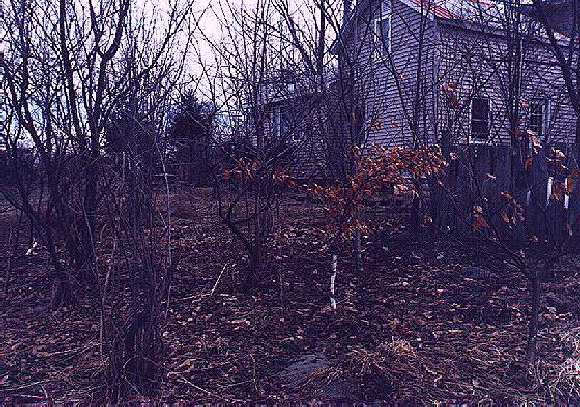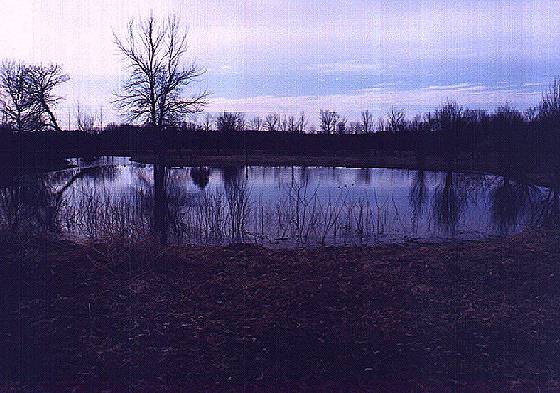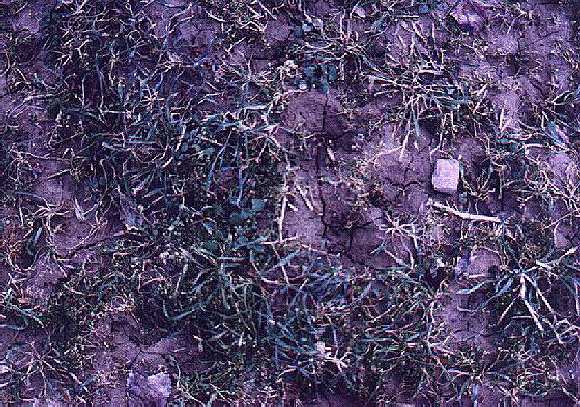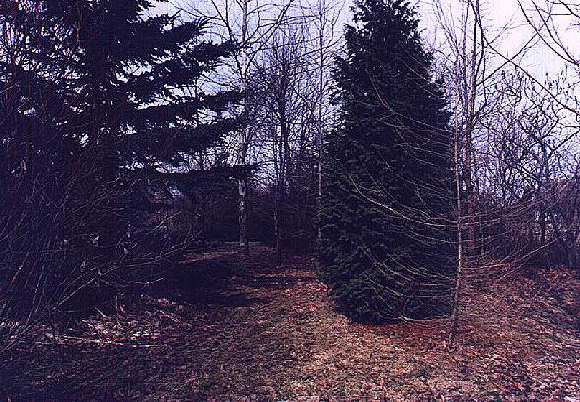
An important concept to permaculture is zonation. Planning so that frequented areas near the house are used to produce highly used crops like many vegetables, fruits and herbs, can be done to create a desirable landscape to live in. Instead of planting that crabapple, plant a serviceberry, a pear, or a stone fruit tree. Filberts make desireable additions to the landscape. There are even nut producing evergreens such as pinon and some of the stone pines that will grow here. No one will protest the occasional crabapple, sunburst honeylocust or crimson king maple, but to have these same species in yard after yard, city after city strikes me at best a lack of imagination, and at worst simplifying nature to being a commodity. There are hundreds perhaps thousands of species of trees that will grow here. Go ahead make a statement!

Some of the trees and shrubs in this young multistory planting includes: Dunstan hybrid chestnut in the sunnier right foreground, beech-with leaves attached, butternut, ohio buckeye(shade tolerant along with beech). Smaller trees and shrubs include a plum, filberts and a nitrogen fixing shrub-amorpha fruticosa. Some native woodland wildflowers are being added to the groundlayer. Notice the greenhouse in the upstairs of the house(some obvious disadvantages to putting a greenhouse in the upstairs).

This small pond cost 1000 dollars to dig. It is filled completely with runoff from the area above it. The benefits to the environment are many with many new species of salamanders, frogs, toads and birds which can help with insect control. There are less mosquitoes now here. Basket willows have been planted around the pond and some small fish have been caught. Forgo upgrading that computer and have a pond dug!
And the reason why this pond doesn't drain away:

CLAY! This is from our quarter acre semicircular garden around our pond. The too thinly planted rye is designed to provide cover and soil protection through the winter while adding organic matter. One axiom of soil improvement and conservation is too always keep the soil covered by keeping something growing at all times. Perennials and woody plants are ideal but some areas need to be in annuals. Rye which can germinate and grow at 40 degrees is ideal.

This is an area in our yard near the house where I practice arboreal gymnastics. The fairly shade tolerant evergreens include northern white cedar on the right and white spruce on the left. Both of these are about fifteen years old. The shade intolerant, fast growing and thinly foliaged european larch on the right foreground planted five years ago, has already topped the arborvitae and will add interest to the landscape(in my opinion). This area has nut trees planted and producing and also functions as a windbreak. One axiom of permaculture is to stack functions, if there is only one reason to do something-then it isn't worth doing.